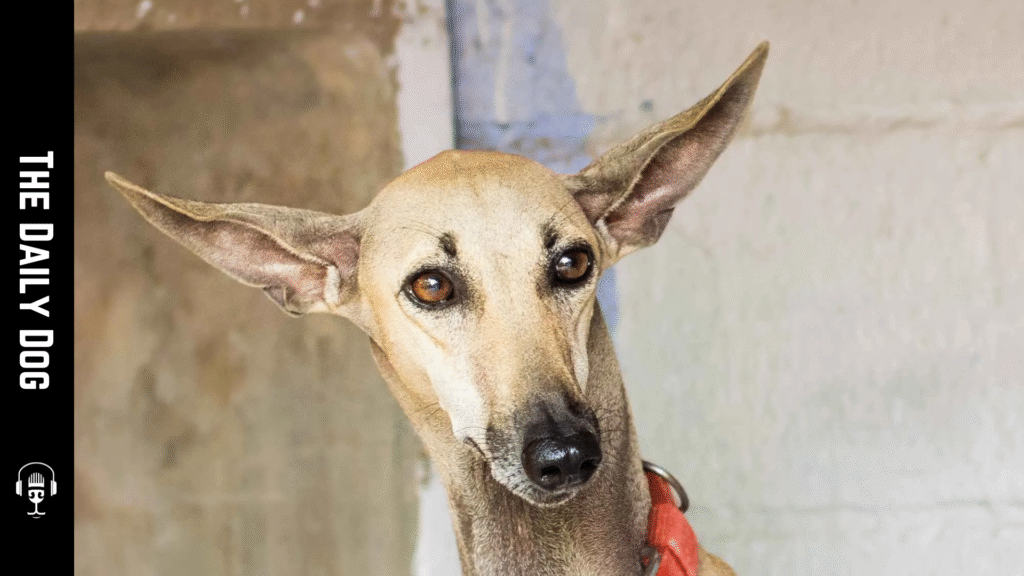In the quiet lanes of Tamil Nadu, a slender silhouette glides with a blend of speed, grace, and a dignified presence. This is the Chippiparai, a breed that has stood the test of time as a living emblem of heritage, versatility, and loyal companionship. Though less common on urban sidewalks than some of the world’s best-known sighthounds, the Chippiparai carries a weight of history, performance, and temperament that resonates with dog lovers seeking a devoted, independent, and healthy canine partner. This article explores what makes the Chippiparai a remarkable breed, from its origins and physical traits to temperament, care, and the unique role it plays in contemporary households.
Origins rooted in ancient practice and local culture
The Chippiparai traces its roots to the southern Indian state of Tamil Nadu, where it has long been valued for varmint control, hunting, and as a trusted farmyard sentinel. Named after the village of Chippiparai, where it is believed to have originated, this breed embodies a pragmatic, working ethos. Its lineage reflects a selective adaptation to the local terrain, climate, and prey, resulting in a dog that thrives on purposeful activity and a balanced, svelte frame. For centuries, Chippiparais were bred to be resilient, fast over short distances, and capable of enduring long hours in hot, rugged environments. Their role as both protector and partner highlights a breed that is as much about steadiness and reliability as it is about speed and stamina.
A distinctive build and the science of health
Physically, the Chippiparai presents a refined, athletic form unmistakable among sighthounds. The breed typically features a narrow, elongated head, deep chest, and a lean, wiry-to-smooth coat that comes in a range of colors, including sable, white, brindle, and combinations of these. A hallmark is the breed’s clean lines and proportionality: strong hindquarters, a tucked abdomen, and a tail that often curves gracefully toward the back. Height usually falls in the mid-range for sighthounds, with a frame that emphasizes agility and endurance rather than bulk.
Health-wise, the Chippiparai is known for a robust constitution when properly exercised and fed. Like many traditional working dogs, it benefits from a routine that balances mental stimulation with physical tasks. Potential health considerations, as with any breed, include hip and elbow health, dental care, and ensuring a healthy weight to protect joints. Because of its history as a working dog in hot climates, the Chippiparai typically has a resilient temperament toward heat and exercise, but owners should avoid overexertion during peak temperatures. Regular veterinary checkups, a high-quality diet tailored to age and activity level, and a consistent exercise plan help maintain the breed’s vitality.
Temperament: independence, loyalty, and a quiet confidence
One of the most striking aspects of the Chippiparai is its temperament. This breed tends to be reserved and observant, forming strong bonds with family while remaining naturally cautious around strangers. It is not a hyperactive or alarmist watchdog; rather, it exudes a quiet confidence and a steady presence that many owners find deeply reassuring. Chippiparais are intelligent and trainable, though they respond best to patient, positive reinforcement methods that respect their independence. Early socialization is essential to ensure they interact well with other dogs and people.
In the home, the Chippiparai often reveals a calm, considerate companion who cherishes routine and meaningful activity. While not inherently pathological for noise or chaos, they appreciate a household that respects their need for predictability and clear boundaries. This breed tends to be relatively clean and makes an excellent indoor pet when provided with ample daily exercise. For families with children, supervising interactions and teaching gentle play helps the bond endure across generations. The Chippiparai’s loyalty is lifelong, and many owners report a steadfast partnership that remains steady through life’s ups and downs.
Activity, training, and mental engagement
Chippiparais excel when their physical and mental needs are met with purpose-driven activities. They respond well to scent work, speed-focused drills, and tasks that engage problem-solving abilities. Because of their independence, training that emphasizes consistency, patience, and short, engaging sessions yields the best results. Crate and house training can be straightforward with positive reinforcement and regular schedules. Socialization from an early age helps prevent lingering shyness and ensures a well-rounded temperament.
Though they enjoy bursts of speed and outdoor exploration, Chippiparais also appreciate structured routines that balance activity with rest. A daily mix of brisk walks, short runs, and mental challenges—such as hide-and-seek with treats or puzzle feeders—keeps them energized without risking burnout. Given their history as hunting companions, a secure yard or leash-focused outdoor time ensures they remain safe while satisfying their instinct to explore.
Care, grooming, and living environment
Grooming needs for the Chippiparai are modest, with coat type varying from smooth to slightly wiry. Regular brushing helps maintain coat health, reduce shedding in homes with sensitive occupants, and provides a chance for bonding. Bathing can be done as needed, typically not on a strict schedule. Dental hygiene, nail trimming, and ear checks should be woven into a routine like any responsible dog family. The key is consistency, short, enjoyable grooming sessions that reinforce trust and create positive associations.
As a medium-sized sighthound, the Chippiparai adapts well to different living environments, provided it receives sufficient daily exercise. They tend to blend well into homes with a calm rhythm and proactive owners who can offer mental stimulation. Urban dwellers should ensure access to a safe outdoor area for play and a plan for regular walks or runs. A securely fenced yard is beneficial, not only for exercise but also for satisfying that natural curiosity that characterizes a sighthound’s temperament.
Choosing the right companion climate and lifestyle
The Chippiparai thrives in climates that suit its heritage, warm, temperate environments where outdoor activity is comfortable for a good portion of the year. Nevertheless, with proper shelter and care, they adapt to a range of living situations. Prospective owners should assess their daily schedule, the time available for training and play, and whether the dog will be integrated into a family setting with children or other pets. Because the breed values routine and clear expectations, households that establish consistent boundaries and predictable schedules tend to experience the smoothest integration.
Preservation, breed popularity, and responsible ownership
In recent years, the Chippiparai has garnered growing interest from enthusiasts seeking a breed with history, form, and temperament that sets it apart from more widely known hounds. As with any breed with a dedicated lineage, responsible ownership and ethical breeding practices are crucial. Prospective owners should seek reputable breeders or rescue organizations that prioritize health testing, temperament screening, and adherence to breed standards. This mindful approach helps safeguard the breed’s integrity and ensures that new families welcome a healthy, stable companion.
The dog as a partner in daily life
Beyond its athletic prowess and quiet confidence, the Chippiparai embodies a philosophy of partnership. It asks for a relationship built on respect, consistency, and shared purpose. When given constructive outlets for its energy and an environment that honors its independence, the breed can be a remarkably loyal and affectionate addition to the home. The balance of athletic capability and serene companionship makes the Chippiparai ideal for families and individuals who value both activity and a subtle, enduring presence.
Caring for a senior Chippiparai
As with aging dogs of any breed, the senior Chippiparai benefits from tailored care that recognizes changing energy levels and potential health considerations. Regular veterinary visits, adjusted exercise plans to accommodate joints and endurance, and a comfortable, supportive sleeping area contribute to quality of life in later years. Mental stimulation remains important for seniors, with gentle enrichment activities that respect their pace. A well-supported senior dog often remains an esteemed member of the family, offering wisdom from years of companionship and shared experiences.
The lasting appeal of a timeless sighthound
The Chippiparai stands as a testament to the artistry of selective breeding and the virtue of a dog shaped by practical needs and human companionship. Its elegance arises not only from its lean physique and swift gait but from the integrity of its temperament and the steadiness it brings to a home. For those drawn to a breed that blends athletic flash with a measured, family-centered demeanor, the Chippiparai offers a compelling path to a lifelong partnership rooted in trust, activity, and mutual respect.
We offer a FREE Strategy Call.
Click on the graphic to learn more
Read More










